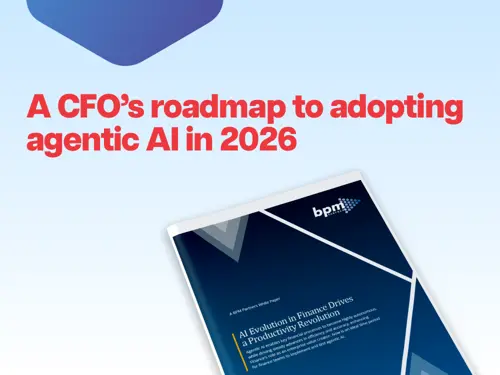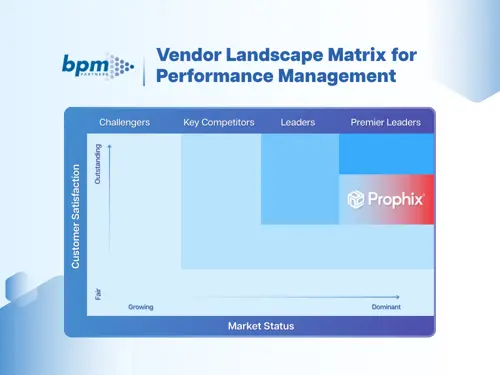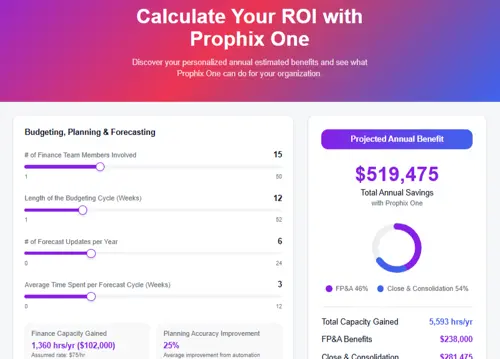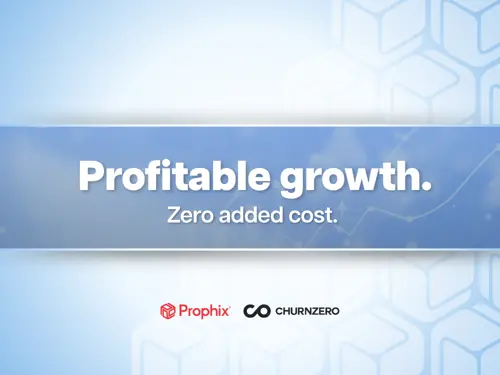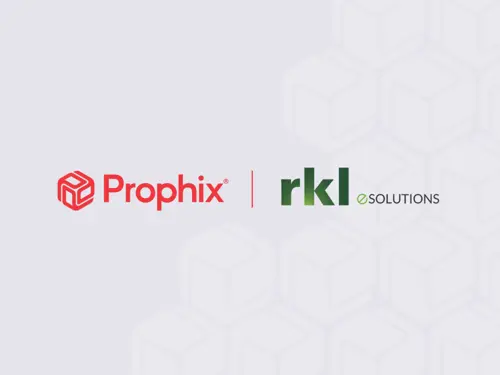Download the BPM Partners Whitepaper
10 best corporate performance management software for 2025
When it comes to CPM software, which is the best for you and your team? Read on to find out.
July 3, 2025CFOs can’t work in silos anymore. Integrated planning requires more than just financial data. That’s why 51% now rely on non-financial insights to guide decisions. They’re building plans that reflect real-time shifts across the business.
Meanwhile, compliance pressure is rising, and data demands are growing. AI can help, yet teams are held back by manual tasks and disparate tech stacks. It’s hard to plan when the numbers are always behind.
As a result, more teams are turning to corporate performance management (CPM) software. It gives teams the real-time visibility they need. This blog post covers the best corporate performance management software in 2025. Read on to see how each platform measures up.
What is corporate performance management software?
Corporate performance management (CPM) software helps finance teams plan, track, and improve financial and operational performance. It pulls data from across the company into one place.
With everything connected, teams can build better budgets. They can forecast with real numbers and adjust as things change. Some organizations refer to it as enterprise performance management (EPM), financial performance management (FPM) or business performance management.
The goal is to reduce manual work and bring planning into a connected system. Teams can use up-to-date information, model different scenarios, and adjust quickly when things shift.
Similar to financial performance management, CPM keeps planning grounded in real numbers, rather than assumptions. It keeps everyone working toward the same goals. However, CPM and FPM also differ. While FPM focuses mainly on financial data and reporting, CPM takes a broader view by integrating operational and strategic planning. Performance management solutions streamline processes and support better decision-making for organizations of all sizes.
Corporate performance management vs Critical path method software
While corporate performance management software and critical path method software share an acronym, they serve distinctly different goals.
- CPM software supports planning, budgeting, forecasting, and performance tracking. It gives finance teams the data they need to make smarter decisions and stay aligned. Gartner introduced the term back in 2001. Since then, it’s grown to include financial, operational, and strategic planning.
- Critical Path Method tools, on the other hand, focus on project schedules. They map tasks, track dependencies, and show the longest path to project completion. The method was developed in the late 1950s to manage large, complex projects with many moving parts.
While the names sound similar, the tools are completely different. One helps businesses plan for the future. The other helps project teams finish on time.
Comparison of the top corporate performance management tools
There’s no shortage of planning tools out there. But the best corporate performance management software stands out for speed, clarity, and control. Here’s a look at the top picks.
1. Prophix One, a Financial Performance Platform

Prophix One provides CFOs with a single view across the entire business. It replaces spreadsheets with automation, real-time data, and tools that make cross-team planning easier. From budgeting and forecasting to financial reporting and close, everything happens in one platform. It’s for companies that need finance, sales, and operations working as one.
Pros
- Automates routine tasks to save time
- Strong scenario modeling and forecasting tools
- AI-powered insights with Prophix Copilot
- Centralized data improves accuracy
- Easy collaboration across finance, sales, and operations
- Responsive support and onboarding
Integrations
Prophix One connects with ERP, CRM, and HR systems like NetSuite, Microsoft Dynamics, Sage Intacct, and Salesforce. These integrations help bring data into one platform.
Pricing
Prophix One offers custom pricing. Reach out for details.
Want to see it in action?
Book a demo to see how Prophix One supports day-to-day tasks and long-term planning.
2. Vena

Vena uses Excel as its base. With Microsoft 365 integration, customizable templates, and built-in workflows, it adds structure without forcing teams to learn a new system.
Pros
- Easy for Excel users
- Customizable templates
- Free trial available
Cons
- Clunky reports
- Slower with large files
- Limited automation
Integrations
Works with Microsoft 365, Power BI, NetSuite, Salesforce, and more.
Pricing
Request a quote.
How it compares to Prophix One
Vena suits teams that are comfortable with Excel. It’s easy to adopt, but relying on spreadsheets can slow down work. Prophix One includes automation, dynamic modeling, and advanced analytics. It helps teams move faster.
3. Anaplan

Anaplan is a cloud platform for enterprise planning. It unites strategic, financial, and operational plans. Teams build scenarios using AI and predictive modeling.
Pros
- Powerful for complex planning
- Real-time collaboration
- Great for long-range and headcount planning
Cons
- Setup can be tricky
- Some features cost extra
- Updates may cause bugs
Integrations
Connects with Salesforce, SAP, Oracle, NetSuite, and more to centralize data.
Pricing
Request a quote.
How it compares to Prophix One
Anaplan is flexible but often needs IT support. It’s best for large teams with technical resources. Prophix One is easier for finance teams to run on their own. For automation and insights without the extra complexity, Prophix One is a better fit.
4. Cube

Cube is a cloud-based FP&A tool that links with Excel and Google Sheets. Cube manages consolidation, scenario planning, and KPI tracking from a single source.
Pros
- Excel and Sheets integration
- Fast setup
- Solid reporting and modeling
- Good for growing teams
Cons
- Not for FP&A beginners
- Less advanced than Prophix One
- Costly for early-stage teams
Integrations
Connects with tools across finance, HR, billing, and sales.
Pricing
- Go: from $1,500/month
- Pro: from $2,800/month
- Enterprise: custom quote
How it compares to Prophix One
Cube suits smaller teams that rely on spreadsheets. Prophix One offers deeper planning, stronger automation, and better scale for larger companies.
5. Datarails

Datarails is an FP&A tool designed for Excel users. Teams can import data, create dashboards, and use AI to speed up reporting and reduce errors.
Pros
- Strong Excel integration
- Easy for spreadsheet-heavy teams
Cons
- Limited data import flexibility
- File mapping can be tricky
- Slows down with large datasets
Integrations
Works with Excel, NetSuite, QuickBooks, Sage, SQL, and more.
Pricing
Request a quote.
How it compares to Prophix One
Datarails relies on Excel, giving users direct control over data. It works well for smaller teams with simple workflows. Prophix One takes a broader approach, adding automation, advanced analytics, and full-platform planning.
6. Jedox

Jedox automates planning, cuts manual work, and connects data across teams. It supports Excel, uses an OLAP database, and offers AI forecasting tools.
Pros
- Flexible modeling
- Strong data integration
- AI-assisted planning
Cons
- Complex custom setup
- Limited advanced analytics
- May need IT support
Integrations
Connects with Excel, ERP, CRM, and other systems.
Pricing
Request a quote.
How it compares to Prophix One
Jedox offers flexibility but may need IT support. Prophix One is easier for finance teams to manage, with built-in automation and analytics.
7. OneStream

OneStream handles consolidation, reporting, planning, and analytics. It’s made for large enterprises with complex needs. It supports financial close, scenario modeling, cash management, and profitability analysis with guided workflows.
Pros
- Strong support
- Clear visualizations
- Reliable close and compliance tools
Cons
- Drill-downs can be complex
- Slows with large data sets
- Setup may need expert help
Integrations
Connects with Microsoft Office, ERP systems, and other tools.
Pricing
Request a quote.
How it compares to Prophix One
OneStream suits large enterprises with broad needs. It’s powerful but complex. Prophix One is easier to manage and better for mid-sized and large teams focused on planning, reporting, and analytics.
8. Planful

Planful helps finance teams handle budgeting, forecasting, and reporting. It includes templates, workflows, and dashboards to keep strategy and execution aligned. Teams can build plans, run scenarios, and track performance.
Pros
- Flexible budgeting
- Collaboration tools
- Money-back guarantee
Cons
- Some manual processes
- Limited training
- Relies on third parties for some features
Integrations
Connects with ERP, CRM, and other tools.
Pricing
Request a quote.
How it compares to Prophix One
Planful supports fast, flexible planning. Prophix One offers more automation and deeper modeling, making it a better fit for teams that need scale and simplicity.
9. Workday Adaptive Planning

Workday Adaptive is a cloud-based FP&A tool for budgeting, forecasting, and reporting. It uses AI and machine learning to speed up planning and improve accuracy.
Pros
- Fast data imports
- Drag-and-drop reporting
- Easy hyperlinked insights
Cons
- Slow load times
- Reporting setup has a learning curve
Integrations
Works best with Workday’s finance and HR tools, but connects with others too.
Pricing
Request a quote.
How it compares to Prophix One
Workday Adaptive fits best with Workday users. Prophix One is more flexible and easier to adopt across different systems.
10. Considering free or open-source options
Free or open-source options help smaller teams manage goals, reports, or simple workflows. They’re low-cost and flexible, making them ideal for startups with tech support.
Pros
- Low cost
- Customizable
- Good for basic needs
Cons
- Limited planning and forecasting
- No structured support
- Security may fall short for enterprises
Integrations
Basic integrations only. Advanced setups often need custom work.
How they compare to Prophix One
Free tools cover the basics but come with their own set of risks. An integrated platform like Prophix One offers robust security protocols, templates and workflows for easy onboarding and quick time-to-value, expert support available to help with any questions, and structure to help finance teams grow.
Why corporate performance management software matters for finance leaders
CFO optimism dropped to 62.1 in Q1 2025. With shifting policies and nonstop data growth, confident planning keeps getting harder. But many teams still rely on tools that make things slower, not easier.
Disconnected systems lead to late forecasts, clunky reports, and compliance risks. When tools don’t connect, it’s tough to trust the numbers. And new rules raise the bar even higher.
CPM software helps solve that problem. It connects systems, cuts down on manual work, and gives a live view of performance. Everyone’s working from the same numbers.
With it:
- Forecasts stay accurate and up to date
- Reports are faster to build and easier to share
Still, 92% of leaders say their tech stack falls short, usually because systems don’t integrate. CPM software fills those gaps and helps finance show a clear ROI.
What to look for when choosing your corporate performance management software
Good decisions start with good data. But getting it isn’t always easy. CPM software helps by cutting delays and connecting systems. Everything stays in one place, updated in real time. To do that, the best corporate performance management software should offer key features.
- Ease of integration: Software should connect with existing tools like ERP, HR, and CRM systems. When data flows freely, teams avoid manual entry, reduce errors, and rely on consistent data.
- Scalability: As businesses grow, their software should keep pace. It needs to support more users, handle more data, and manage added complexity without slowing things down.
- Automation capabilities: With finance roles harder to fill, teams can’t waste time on manual tasks. Automation frees people to focus on higher-value work.
- Real-time analytics: Old data leads to slow or missed decisions. Real-time dashboards solve that by keeping everyone aligned on the same data.
- User-friendly interface: If it’s hard to use, it won’t get used. A clean interface means quicker onboarding, fewer support issues, and smoother adoption across teams.
- Cross-functional planning: Finance doesn’t work in isolation. A good financial planning and analysis tool connects finance with operations and strategy, helping teams align goals and respond quickly to change.
- Security and compliance: CFOs now play a bigger role in managing cyber risk. With 78% improving their approach, software needs audit trails, encryption, and approval controls to keep data secure and teams compliant.
The right CPM software supports future growth. Choose a tool that works now and grows with the business.

Core benefits of corporate performance management tools
Finance automation has come a long way. Early tools sped things up, but they were limited. Today, corporate performance management software pushes past basic automation. Here’s how the best corporate performance management software helps finance leaders get ahead:
- It cuts down on manual work. Reports update automatically, which saves time and cuts down on errors. Health Connect America saw that firsthand. They used Prophix One to cut their month-end close from 4.5 days to just 2.
- It keeps planning and budgeting in sync. Everyone works from the same data, so teams avoid version issues and endless back-and-forth. Health Connect America also improved budget accuracy by 93%, shrinking variance from 16.1% to 1.1%.
- It makes compliance less painful. Features like role-based access and audit trails protect sensitive data and support reliable reporting.
- It gives answers in real time. Teams can track performance as it happens, catch issues early, and adjust quickly. SoundOff Signal put that into practice and saw income forecast accuracy jump by 16.7% and expense accuracy improve by 32%.
With so many tools on the market, finding the right fit matters. That’s why many finance teams turn to review sites like G2, TrustRadius, and Gartner Peer Insights to help weigh their options. It provides an independent view of how vendors perform and how well they meet business needs.
Implementation strategies for CPM software
According to McKinsey, around 90% of organizations are undergoing some form of digital transformation. But despite all that effort, only 41% say they’re seeing strong value.
To get results from CPM software, finance leaders need a strategy. One that gets the team on the same page, cleans up the data, makes it easy to use, and shows ROI right from the start.
Build a talent bench early
Successful rollouts start with alignment. Bring in the right mix: finance leads, project managers, IT, and key users. Each brings a different perspective that helps the rollout run smoother.
It’s as much about trust as technical support. When people see how the system makes their work easier, they’re more likely to support it. Some may push back, and that’s normal. Keep the message clear, highlight the benefits, and address concerns early.
Make training useful, and repeat it
Don’t go through the motions. People need to actually see how the system fits into their day-to-day work. That means short, hands-on sessions tailored to each role, not generic overviews.
Start early, before you launch. Follow up with refreshers to reinforce key steps. Stay available for questions as they come up. Remember, adoption takes time, and consistent support helps it stick.
Fix the data before migration
If teams don’t trust the data, they won’t use a CPM system. Before going live, clean up old records, fix errors, and ensure everyone knows who owns what.
Deloitte found that 73% of leaders struggle to define the right metrics. That’s often because the data is messy and responsibilities aren’t clear. Good governance helps keep data accurate and systems useful.
Keep communication going
Ongoing communication is key. Teams should be informed about what’s changing, how it affects them, and where to find support. At the same time, gathering feedback helps surface issues early and adjust as needed. Clear expectations should be set from the start. Challenges will come up, but the response makes all the difference.
Track ROI from the start
Research shows that organizations tracking a broader set of KPIs are 20% more likely to link digital transformation to enterprise value. But surface-level metrics aren’t enough.
Start simple:
And then look at both tangible and intangible benefits:
- Hard ROI: saved time, faster close cycles, fewer errors
- Soft ROI: quicker decisions, better teamwork, stronger visibility
Don’t wait for year-end reviews. Track results regularly and across all modules. The more that gets measured, the clearer the value becomes.
Plan for bumps in the road
No rollout goes perfectly, so it’s smart to plan for bumps early. Delays, staff turnover, and shifting budgets can throw things off track. Identify those risks, rank them by impact, and build backup plans.
Choose a trusted vendor
The right vendor doesn’t disappear after setup. The best corporate performance management software guides strategy, solves issues, and helps teams get more from the tool over time. Keep them involved. Their input can surface new ways to drive value.
Keep moving forward
Go-live isn’t the end. As business needs shift, CPM systems should keep up. Regular check-ins help teams see what’s working and where there’s room for improvement. Tracking more than just productivity, like financial, customer, process, workforce, and purpose metrics, gives a clearer view of long-term value.
Make informed decisions with the right performance management platform
A static CFO is a vulnerable one. And it shows, 57% of executives say they’re missing opportunities because decisions take too long, according to PwC. Slow processes and limited visibility make it difficult to keep up, let alone lead.
Manual steps turn simple updates into full-day projects. One team pulls data, another cleans and formats it, and someone else builds the report, only to run into errors or missing inputs. By the time it’s complete, the numbers are already outdated. The best corporate performance management software solves that.
With Prophix One, finance teams open one dashboard and see real-time data that’s clean, consistent, and ready. Forecasts update automatically. Approvals move forward without email chains. And instead of fixing spreadsheets, teams focus on what comes next.
Skip the spreadsheet scramble next month-end.
